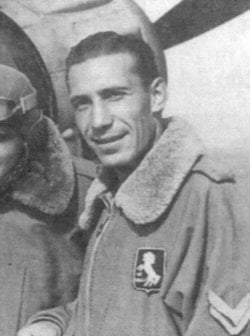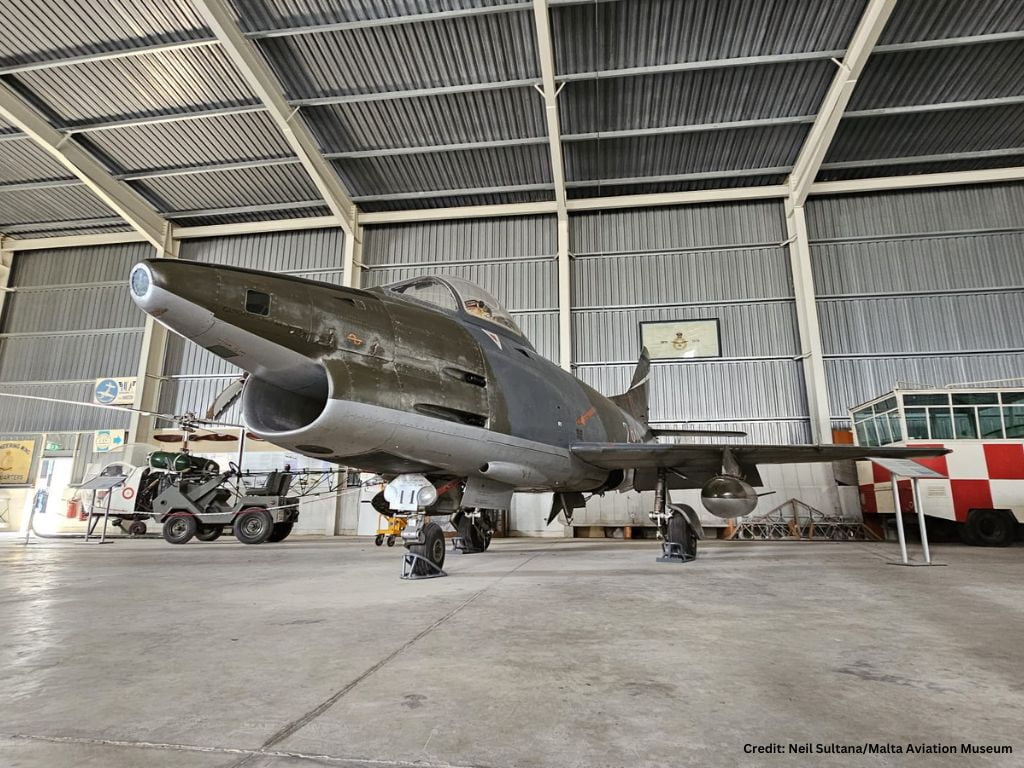Memories from the Tower: An RAF Control Clerk’s Account of Operation Musketeer at Luqa, Malta, 1956
By Keith Thomas
It was a lovely late spring evening when I arrived at Luqa, Malta, on runway 06/24 in mid April 1956. I was just 20 years old and this was my first visit abroad, courtesy of Her Majesty’s Government. I had been “Called Up” to do my National Service, having completed my trade training as an “Operations Clerk” and was posted to RAF Luqa Control Tower.
I had taken off that morning from Blackbush in Hampshire, in a Vickers Viking of Eagle Airways under contract to the UK Government, to fly personnel and families out to Malta and Cyprus. A feature of the aircraft that struck me was the rear facing seats. Having lived in London and Essex during the Second World War, I did not expect to be involved in another one. This was to be Operation Musketeer, to regain control of the Suez Canal from the Egyptians in 1956.
The first airmen heard about this was some time before the invasion. Malta was used to build up men and supplies in readiness for this operation. As each shift of five airmen (we worked a four shift system) came on duty, the Senior Air Traffic Controller, Squadron Leader Lowes addressed us, reminding us that we had signed the Official Secrets Act. He then went on to expalin that we, the English, together with the French, were at war with Egypt over the Suez Canal.
The first indication of how busy the airfield was going to be was when at least two squadrons of Shackleton MK1s flew in from the UK with airborne troops on their way to Cyprus, followed shortly by Camberras from Binbrook, Watton, and West Raynham airfields in UK. This amounted to some 36 to 40 aircraft, together with a number of the then new Vickers Valiant known as a V Bomber.
Our resident squadrons were 37 and 38 with Shackletons, together with 208 squadron, with Meteor F8 fighters. There was also a Malta Communications Flight of six aircraft. Parking facilities for all these aircraft were getting very restricted. We then started receiving the French Air Force transport aircraft, mostly staging through, but staying the night. Added to this, many of the pilots could not speak English and our controllers could not speak French.
This made life a little more difficult. We would find one who could speak English, so we kept him in the circuit and he relayed instructions to the other aircraft. Flight Plans had to be submitted to the Control Tower some hours prior to take-off. These were in French and had to be carefully checked as there were four air corridors in which you entered or departed from Malta. These areas were restricted, because of ‘Range firing by the Navy and the Army’.
By now the airfield was filling up and we could not use the civilian parking area for security reasons, so the decision was taken to use the short runway (32) to park visiting and RAF aircraft hoping the wind did not change too dramatically. The Army moved into Luqa, anti-aircraft guns being sited around the airfield, with an officer in charge, stationed in the control room with communications to all guns. The ‘movements’ side of the control tower not only had links to all entry points around the airfield, which were manned by the Malta Police but also had a direct line to the main Operations Room in Valletta.
With an airfield full of aircraft, the inevitable happened with ‘unidentified’ aircraft. I was on duty at the switchboard and received a call from Operations to scramble a flight of Meteors to investigate this aircraft. I carried out these instructions and watched the pilots run to their aircraft and take off. We heard later that the ‘unidentified’ aircraft was a civilian airliner over-flying Malta, which had not received any messages from Central Mediterranean Control.

At the back of the central control room, a switch had been installed, which, if Malta were to be attacked by aircraft at night, could turn off ninety percent of the lights in Malta. My duty roster saw me in the Tower when we launched the first raid on Egypt. I learnt, years later, that the target was Cairo’s main airport. At about the time we were due to bomb it, the personnel of the American Embassy were due to fly out.
The force consisted of three Valiants and all the Camberra bombers. Some fifty minutes or so after all aircraft had departed, some high ranking officers, together with the Senior Air Traffic Controller and the Station Commanding Officer, were in discussion in the main control room. Suddenly, the sliding window to the radio room opened violently and the Senior Air Traffic Controller ordered me and a colleague to recall all the aircraft by coded message.
We contacted all aircraft, except for one Camberra and one Valiant. Having told the Controller of the problem, I was instructed to contact the two aircraft in ‘plain language’. I managed to contact the Camberra pilot, who naturally requested confimation, i.e. pilot’s name and aircraft number. This I obtained and he relayed the message to the Valiant and both aircraft returned safely to Malta.
Forty-two years later, while living in Norfolk, not fare from Watton airfield, a couple from Scotland contacted us for bed and breakfast, which my wife handled. Over breakfast we established that he was the pilot I had spoken to all those years earlier. This was our first meeting. During the ‘build up’ prior to the invasion of Suez, not only was it a problem with parking aircraft but there was also a problem in finding billets for the increased number of Army personnel.
All the shift workers on Luqa had separate living blocks at the back of the living site (now under the command of Armed Forces of Malta, Luqa Barracks). The Army took over our block and we were moved to a regular airman’s block, opposite the parade ground, from our normal four man to a room, to eight men to a room. That was alright, but when you had been on duty all night and the Orderly Officer did an inspection, it was very annoying to be woken up and told to explain why you were still in bed, although this never happened in our block.
Just after the Suez campaign was over, two incidents occurred, one with a civil aircraft and one with an RAF aircraft. Sunday afternoon was usually quiet and all the ranges were closed, as also were the other two airfields. A Viking aircraft was due in from London and the pilot called us up on the radio and we gave him instructions to join the airfield circuit. He then called turning final approach and we replied with the current information on wind, etc.
I looked out of the tower towards the final approach of runway 06/24 but there was no aircraft there! Then over the radio came ‘taxi instruction’. We replied: ‘Describe your location’. From his reply we realised that he had landed at Ta’ Qali airfield, five miles to the north, which was closed on Sundays. So he had to wait until we sent the ‘fire crew’ over and replaced ours with the standby crew. Next morning a very embarrassed Captain came to the tower with his Flight Plan.
The other incident involved a Vickers Valiant bomber. The wind at the time was strong enough for him to land on a direct approach on the short runway 32 – at this time not being used for parking aircraft. He approached from the south over Safi where the old wartime runway was and as we watched the Valiant from the control tower, he descended below our horizon. The controller quickly told him he was not on our runway. The pilot replied saying “I wondered why the cars suddenly shot to the left and right, as I was descending”. One can only imagine the shock and horror of the drivers seeing this large aircraft, wheels down, heading straight towards them.




